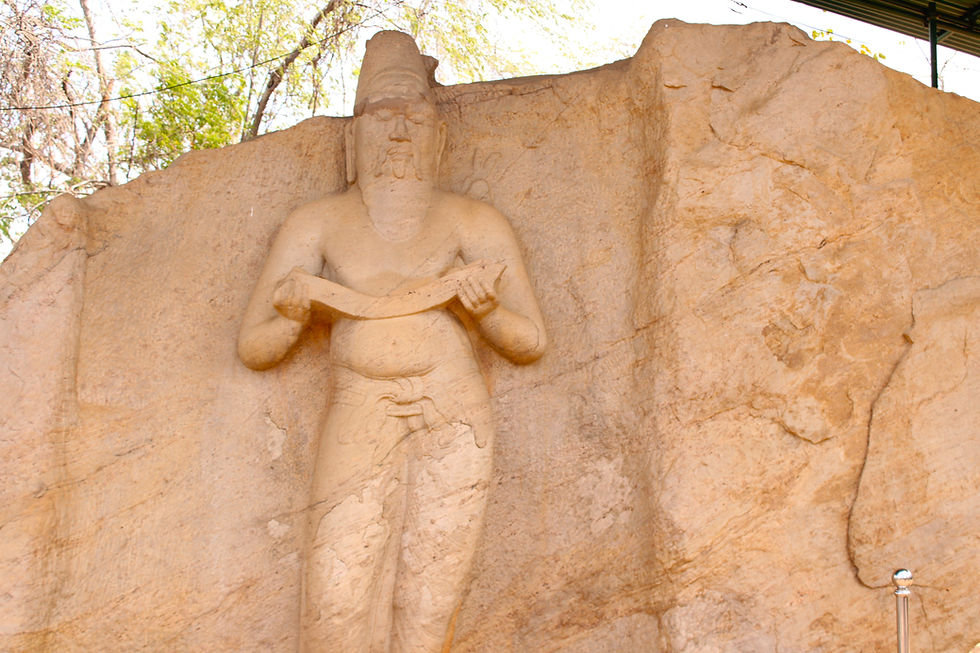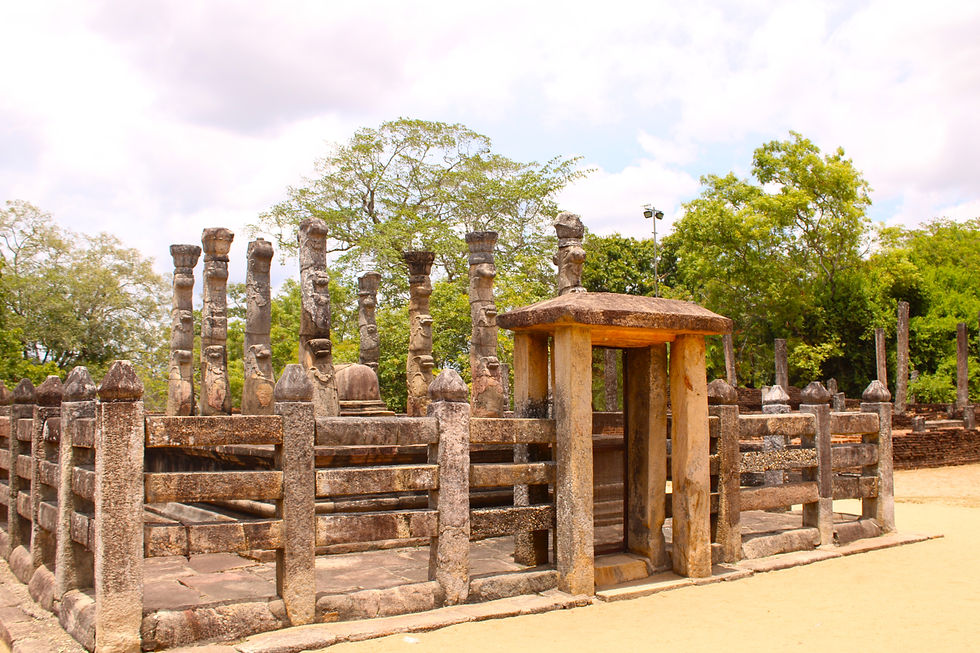Polonnaruwa Srilanka
- sajith dhanapala
- Sep 23
- 3 min read

Palace of king "Parakramabahu"

The Palace of King Parakramabahu in Polonnaruwa, Sri Lanka, is a grand ruin that reflects the magnificence of the Polonnaruwa Kingdom in the 12th century. Built by King Parakramabahu I, it is believed to have been a massive seven-story structure with over a thousand chambers, serving as the royal residence and administrative center. Today, only parts of its thick brick walls, staircases, and foundations remain, but they reveal its vast scale and strength. The palace stands within the royal citadel, surrounded by other important buildings, and showcases the architectural brilliance and power of one of Sri Lanka’s greatest kings.
"Gal Viharaya"


The Gal Viharaya, located in Polonnaruwa, Sri Lanka, stands as one of the country’s most revered Buddhist landmarks. Dating back to the 12th century and the reign of King Parakramabahu, this monument was hewn from a single granite rock face and showcases four impressive Buddha statues: a grand seated Buddha, a smaller seated image set within a cave-like alcove, a standing figure, and a reclining Buddha representing Parinirvana. Celebrated for their remarkable craftsmanship and profound tranquility, these sculptures exemplify the skill and spiritual devotion of ancient Sri Lankan artists. Today, the Gal Viharaya remains a cherished pilgrimage destination for visitors from around the world.
"Lankathilaka pilima geya"
This remarkable structure, built by King Parakramabahu in the ancient city of Polonnaruwa, houses a 41-foot-tall Buddha statue. The building measures 26 feet in length and 13.6 feet in width, with walls constructed from rock pillars and originally topped with a wooden roof. It is believed that the wooden roof was either lost to decay or destroyed by South Indian invaders. The building was designed as a two-story structure, featuring entrances at the rear on both sides. Murals adorn the walls, and the Buddha statue is visible in full view from the main entrance. Among all the statue buildings in Polonnaruwa, this is the largest.
Watadageya

This is also situated in ancient city of Polonnaruwa called “watadageya” because this is a building made by encircling the Buddha staute for its protection. This is one of a beautiful structures mage during Polonnaru era and by king “Nissankamalla”. This is a two-storied building that has easy access to the top floor from four entances. Both stories are made fascinating by rock carvings. This is made to go around saying prayers to Buddha and worship. Special thing about this Buddha statue is it is carved with no hair in it.The Gal Viharaya, located in Polonnaruwa, Sri Lanka, stands as one of the country’s most revered Buddhist landmarks. Dating back to the 12th century and the reign of King Parakramabahu, this monument was hewn from a single granite rock face and showcases four impressive Buddha statues: a grand seated Buddha, a smaller seated image set within a cave-like alcove, a standing figure, and a reclining Buddha representing Parinirvana. Celebrated for their remarkable craftsmanship and profound tranquility, these sculptures exemplify the skill and spiritual devotion of ancient Sri Lankan artists. Today, the Gal Viharaya remains a cherished pilgrimage destination for visitors from around the world.
"Nissanka latha mandapaya


The Nissanka Latha Mandapaya in Polonnaruwa, Sri Lanka, is a unique and fascinating monument built during the reign of King Nissanka Malla (1187–1196 AD). It is a pillared pavilion located near the Dalada Maluwa, the sacred quadrangle that houses several important religious monuments. The structure was used primarily for chanting pirith (protective Buddhist verses), reflecting the king’s deep devotion to Buddhism.
What makes the Nissanka Latha Mandapaya especially remarkable is the design of its stone pillars. Unlike the straight and solid pillars seen in other monuments, these are gracefully curved, resembling lotus stalks, with intricate carvings that end in blossoming lotus buds. This lotus motif symbolizes purity and enlightenment in Buddhist tradition, adding deep spiritual significance to the structure.
The pavilion originally had a roof supported by these unique pillars, and in the center lies a small stone stupa, which further emphasizes its religious purpose. Despite centuries of exposure, the carvings remain elegant and showcase the artistry of medieval Sri Lankan stone craftsmanship.
Today, the Nissanka Latha Mandapaya stands as a symbol of architectural innovation and devotion, admired by both pilgrims and travelers. It is a must-see site that highlights the cultural brilliance of Polonnaruwa’s ancient kingdom.





Comments